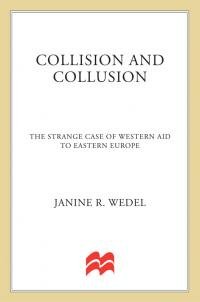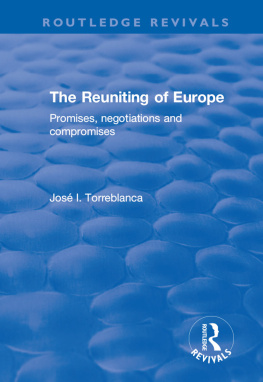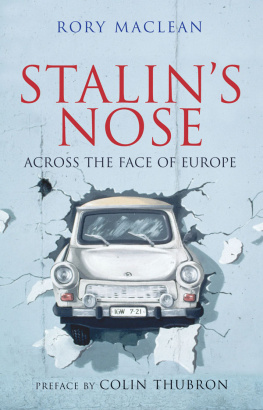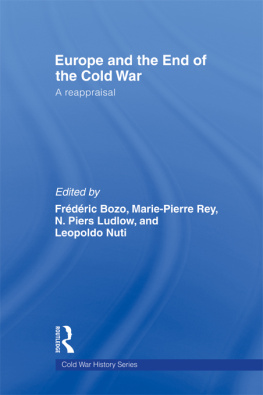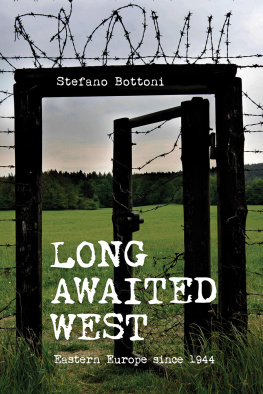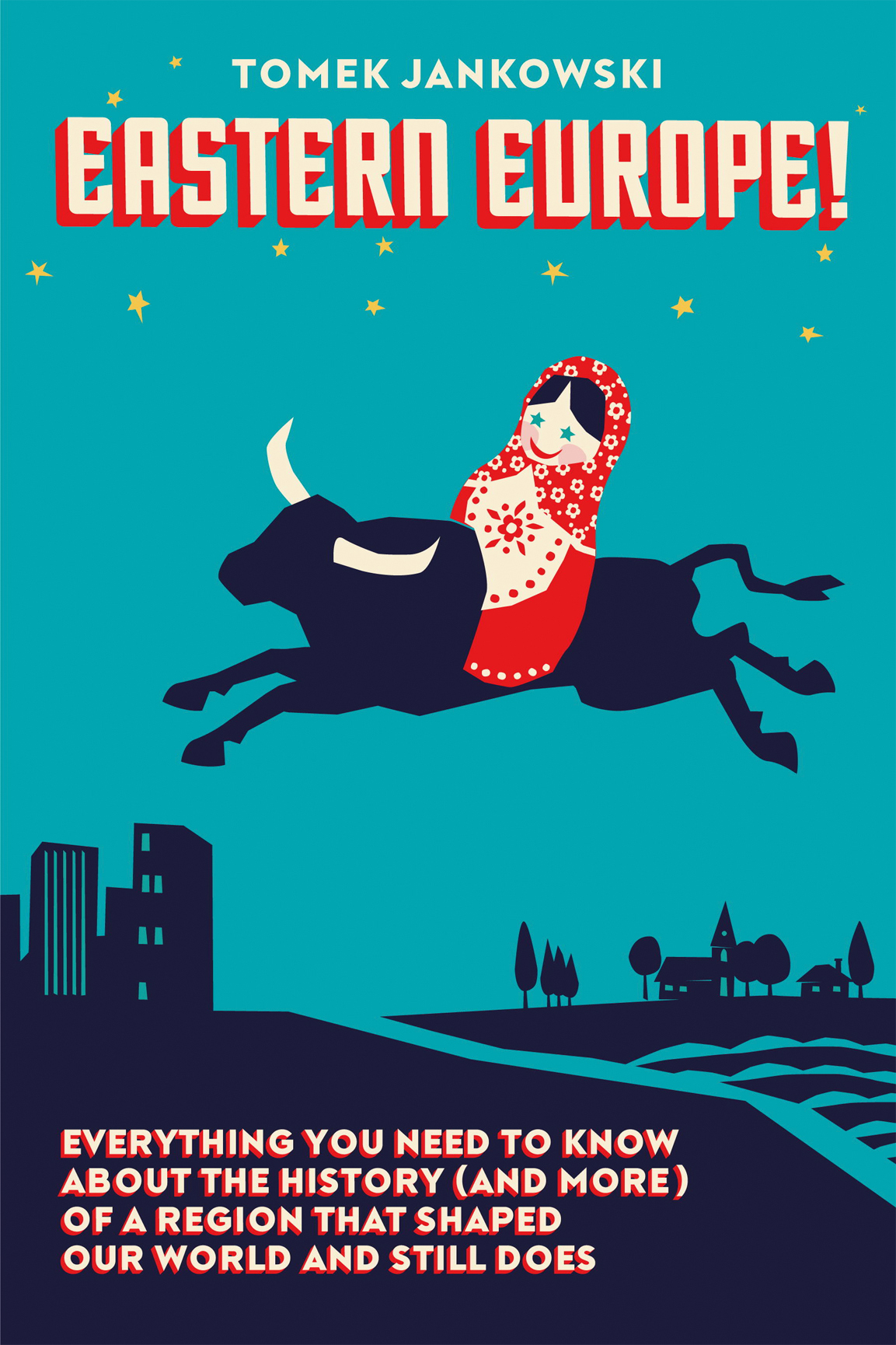Published by New Europe Books, 2013
Williamstown, Massachusetts
www.NewEuropeBooks.com
Copyright Tomek Jankowski, 2013
Cover design Oscar Boskovitz, 2013
Paperback Interior design by Justin Marciano
ALL RIGHTS RESERVED. No part of this eBook may be reproduced or transmitted in any form or by any means, electronic or mechanical, including photocopying and recording, or by any information storage or retrieval system, without written permission from the publisher except in the case of brief quotations in critical articles and reviews.
eBook ISBN: 978-0-9850623-3-0
Trade Paperback ISBN: 978-0-9850623-2-3
Cataloging-in-Publication Data is available from the Library of Congress.
v3.1
Dedicated to my wife, Magda,
for putting up with me and all the books
In 1989, as a young scholar from Hungary, I was one of the fortunate few among my compatriots who had the opportunity to study in the United States. The rapid changes that were occurring in Eastern Europe captured the imagination of many fellow students. I remember a German student suggesting that the students of Indiana University form a European Club. Good idea, I thought, Perhaps we are on the map of Europe, after all. That student then designed an emblem we could use on T-shirts. It turned out to be an outline of the European continent, but at one glance, it became apparent that Eastern Europe was missing.
We now know that the Western world was highly apprehensive about the fall of Soviet power in Eastern Europe and continental reunification was not envisioned at all. We were not part of the Western mental map of Europe. Perhaps the situation has improved somewhat today, but Europe for many Americans (and Germans, Frenchmen, British, and Italians) still means the West . Eastern European contributions to world civilization cant be told in just a few lines: the list includes artists, writers, musicians, scientists, scholars, film makers and more. To mention a couple: did you know that Andy Warhols parents and brothers were born in Slovakia, or that Rubiks Cube comes from Hungary?
The author of this book used to be a student of mine at Janus Pannonius University in Pcs, Hungary, where he lived and taught for years. Led at first by his Polish ancestry, he immersed himself in history and along the way developed a devotion to the study of Eastern Europe. As we used to talk over many a kors of beer (need I explain?), careful not to clink our glasses lest we violate a national taboo stemming from the 19th century, young Tomek and I would mull the regions almost complete absence from the Wests consciousness. Now he has produced a unique portrait of Eastern Europe, from Szczecin all the way down to Trieste and beyond, one that would give a professional historian pause. This book is a veritable intellectual feat, not only because the author seems to be at home in languages, history, and literature as diverse as, say, Bulgarian and Hungarian, but mainly because his book conveys what it means to be European and Eastern European at the same time. Eastern Europe! is a guide through the millennium-long maze of wars, strange customs and habits, and seemingly impenetrable languages of a region that has been largely shaped by external powers but has also left its imprint on the world.
This is a must-read for all who want to learn about and understand this forgotten part of Europe.
Lszl Borhi
Senior Researcher, Institute of History of the Hungarian Academy of Sciences; Visiting Professor, Central Eurasian Studies, and Chair Professor, Hungarian Studies, at Indiana University, Bloomington; author of Hungary in the Cold War, 19451956
Q: Why am I reading this?
A: I have a few assumptions about why youre reading this. They fall into the following categories:
Youre in the dentists office and its either this book or the June 1995 copy of Cosmopolitan youve already read over the last nineteen appointments.
Youve inherited a surname with lots of extra letters youre sure youre mispronouncing.
Youre dating someone who has inherited a surname youre sure youre mispronouncing, and its really starting to irritate his/her parents.
Someone close to you is in the military and is currently stationed in one of those countries with a severe vowel drought.
You accidentally moved pictures of your boss youd tweaked in Photoshop onto the company intranet, and now youre the office manager for your companys Albania branch.
Theres a Ukrainian church near your home that sells the most amazing pierogis on Saturdays, and youre trying to pry the recipe out of those little old ladies with the babushkas.
Youre a government employee who was just tasked with researching some detail about Trghksbjndkltsylvania or Phgdvnmtrzcdograd.
Junior just called from his/her exchange program in Prague, and you couldnt tell from his/her slurred speech whether the country was famous for its beers or bears, so you figure youd better pay him/her a visit.
You have a crucial exam tomorrow morning for a 400-level class and youre hoping to God this book explains who Tycho Brahe was, what he did, and when and where he did it.
Well, whatever your reasons for reading this book, were here to help.
Q: What is Eastern Europe?
A: You would think the answer would be easy; just grab a map of Europe and look at the eastern halfbut its not quite that simple. Defining Eastern Europe throughout history is sort of like playing the proverbial wack-a-mole game. The Romans thought of Eastern Europe as everything east of what they controlledwhich meant the Balkans were a core and integral part of Roman civilization, while Britain was an outlying barbarian border territory. The breaking of the Roman Empire into eastern and western halves muddled the East-West border somewhat, but Charlemagnes empire put a stake on the Elbe and Danube rivers as the Wests outer eastern boundaries. (This meant that Vienna was a border town, while modern cities like Berlin and Copenhagen were in the barbarian East.) The Great Schism in Christianity, the Steppe invasions, the Ottoman Empire, the rise of the German empires, the rise of Russiaand its doppelgnger , the Soviet Unionall kept reshaping and redefining Eastern Europe for each new generation.
The term Eastern Europe only came into use in the late-18th century as an increasingly prosperous and powerful (and self-aware) Western Europe wanted to distinguish itself from the backwards, decaying medieval relics in the east. In the late-17th century, Pope Innocent XI proclaimed Poland antemurale christianitatis (Rampart of Christendom) but in the early-19th century the great Austrian statesman Prince Metternich famously declared Asien beginnt an der Landstrae (Asia begins at Province Street)referring to the road beginning at Viennas eastern gate leading eastward into Hungary.
A common thread throughout all these changes has been that Eastern Europeand who is Eastern Europeanhas always been defined by others. Todays Eastern Europe, for example, derives from the Cold War of 194589 and Stalins Iron Curtain. This is a book about peoples who only fairly recently came to think of themselves as Eastern Europeans, but who nonetheless have always been fully engaged in European history and have even, on occasion, played important roles.


